Why Should Alternative Lenders Care About White-Label Infrastructure?
Michael Barnett's Loan Spark represents a strategic pivot that alternative lenders keep missing: instead of competing for direct borrower acquisition, build the infrastructure that lets trusted advisors offer your capital under their brand.
The Economics Are Compelling:
- Direct lending CAC: $1,500-$3,000 per funded loan
- White-label CAC: $200-$500 per funded loan (partner handles origination)
- Result: 5-10x improvement in customer acquisition efficiency
Why This Model Works: Accountants already know their clients' financials. Real estate brokers control deal flow. Business brokers facilitate M&A transactions requiring acquisition financing. These professionals have trust that takes lenders years and millions in marketing spend to build. Barnett's insight: let them monetize that trust while you provide the capital and compliance infrastructure.
Three Critical Implementation Details:
- Partner Economics Must Align: Offer 50-200 basis points of loan value as referral fees, plus revenue share on servicing income. Partners need meaningful economics or they'll view lending as a distraction from their core business.
- Technology Must Be Truly White-Label: Borrowers should never see Loan Spark's brand. The application portal, emails, and loan documents carry the partner's brand exclusively. Half-measures here destroy the value proposition.
- Partner Training Determines Success: A CPA referring clients without understanding credit requirements generates applications that don't fund. Loan Spark invests heavily in partner education, which most lenders skip to save costs and then wonder why their white-label program fails.
Who Else Is Competing in White-Label Commercial Lending?
Loan Spark isn't alone. Understanding the competitive landscape matters because each player's approach reveals different strategic bets about where this market is heading.
Direct Competitors Operating White-Label Commercial Lending Platforms:
Lendio operates a marketplace model that includes white-label capabilities, connecting small businesses with multiple lenders. Their approach differs from Loan Spark: they aggregate multiple capital sources rather than providing their own balance sheet. According to Lendio's 2024 platform data, they've facilitated over $15 billion in small business loans, but their white-label offering focuses on SaaS platforms rather than professional services firms.
National Funding offers white-label business lending primarily targeting merchant cash advance and short-term working capital. Their partner network includes ISOs and brokers rather than accountants or real estate professionals. National Funding's partner program emphasizes speed over relationship-driven origination, a fundamentally different model.
Newtek Small Business Finance (now part of NewtekOne) provides white-label SBA lending through financial institutions and referral partners. Per Newtek's SEC filings, they originated over $500 million in SBA 7(a) loans in 2023, making them a significant player in government-guaranteed small business lending.
How Loan Spark Differentiates:
- Commercial Real Estate Focus: While competitors emphasize working capital and equipment financing, Loan Spark positions commercial real estate mortgages as a premier product. This requires different underwriting, longer closing timelines, and larger loan sizes, but generates higher per-loan revenue and attracts professional advisor partners (commercial brokers, CPAs serving real estate investors).
- Professional Services Partner Strategy: Targeting accountants and mortgage brokers rather than ISOs and merchant acquirers creates a different quality of origination. CPAs know clients' tax returns before applications are submitted. This pre-qualification dramatically improves approval rates.
- 30-Day Commercial Mortgage Closings: Traditional bank commercial mortgages take 60-120 days. Loan Spark's 30-day execution (qualified in one day, closed in under 30) competes on speed, not just rate. This matters for time-sensitive transactions: property auctions, 1031 exchanges, acquisition financing where timing determines deal viability.
The Market Gap Loan Spark Exploits:
Most white-label lenders serve high-volume, low-touch transactions (merchant cash advances, small working capital loans under $100K). Loan Spark targets $250K-$5M+ commercial loans where professional advisor relationships matter more than digital marketing. According to Federal Reserve data on small business lending, loans over $250K represent only 15% of application volume but 65% of total dollar volume, a less crowded and more profitable segment.
Is AI Implementation Actually Delivering ROI or Just Hype?
Barnett's claim that AI writes 60-65% of Loan Spark's code deserves scrutiny. That's a dramatic shift from 0% one year ago. But the phased implementation approach matters more than the percentage.
The Four-Phase AI Deployment:
Phase 1: Internal Operations (Months 1-3)
- Email drafting, grammar checking, content generation
- Low risk, immediate productivity gains
- Builds organizational comfort with AI outputs
Phase 2: Engineering Acceleration (Months 3-6)
- AI-assisted code generation using GitHub Copilot or similar tools
- Automated testing and debugging
- Result: 60-65% of production code now AI-generated
Phase 3: Document Intelligence (Months 6-12)
- Data extraction from bank statements, tax returns, financial statements
- Fraud detection for altered documents and synthetic identities
- Income verification automation
Phase 4: Customer-Facing Applications (Months 12+)
- Embedded AI in borrower application experience
- Real-time document upload guidance
- Instant preliminary credit decisions
Three Reasons This Phased Approach Works:
- Risk Escalation Matches Organizational Readiness: Internal AI mistakes (bad email drafts) don't harm customers or create regulatory exposure. Customer-facing AI errors do. Building confidence through low-risk applications before high-stakes deployment prevents catastrophic failures that destroy AI adoption programs.
- Measurable ROI at Each Phase: Code generation ROI: reduced engineering hours per feature release. Document processing ROI: time reduction per loan file review. Customer experience ROI: application completion rate improvement. Each phase delivers quantifiable value before additional investment.
- Regulatory Examination Readiness: When examiners ask "How do you ensure AI accuracy?", lenders with phased deployment can demonstrate testing protocols, human review processes, and error rate monitoring established during low-risk phases. Lenders who deploy customer-facing AI first struggle to provide satisfactory answers.
The Competitive Implication:
Lenders not implementing AI at this scale face a compounding disadvantage. Loan Spark's underwriters now review AI-generated financial spreads rather than manually extracting data. This means:
- Same underwriter headcount processes 3x more loan volume
- Lower cost per loan funded
- Faster time to decision (hours vs. days)
- Better fraud detection through pattern recognition at scale
Within 24-36 months, manual underwriting shops will be competitively obsolete in the same way that fax-based mortgage origination became obsolete after automated underwriting systems emerged in the early 2000s.
How Do You Actually Close Commercial Mortgages in 30 Days?
Most commercial real estate lenders quote 60-90 day closings. Some take 120+ days. Loan Spark's 30-day capability isn't marketing copy, it's operational design that requires specific infrastructure.
The Six Required Components:
1. Eliminate Loan Committees Traditional banks use weekly or biweekly credit committee meetings to approve loans. This creates 7-14 day delays at the decision stage. Loan Spark empowers underwriters with approval authority up to $5M within defined credit box parameters. No committee, no delay.
2. Parallel Processing Architecture Banks order appraisals, then title work, then insurance sequentially. Each step waits for the prior step to complete. Loan Spark orders all three simultaneously the day after application submission. This alone saves 20-30 days.
3. Automated Property Valuation Third-party automated valuation models (AVMs) or desktop appraisals replace full site visits where possible. For properties requiring full appraisals, pre-negotiated appraisal management company relationships ensure 7-10 day turnaround vs. industry standard 15-20 days.
4. Pre-Approved Legal Documents No custom document negotiation. Borrowers accept standard loan agreements or don't close. Banks allowing attorney negotiations add 10-15 days per deal. Loan Spark's take-it-or-leave-it approach eliminates this delay.
5. Daily Funding Cycles Banks fund weekly or monthly based on warehouse line draw schedules. Loan Spark funds daily, meaning a loan ready to close on Wednesday closes Wednesday, not the following Monday.
6. Warehouse Line with 24-48 Hour Funding Commitment Capital partners must commit to 24-48 hour funding once closing conditions are met. This requires premium warehouse line relationships that most lenders can't access without significant loan volume and proven track record.
Three Reasons Traditional Banks Can't Compete:
- Risk-Averse Culture: Banks promote employees who avoid losses, not those who close fast. This creates organizational incentives that prevent speed optimization. Alternative lenders accept slightly higher default risk in exchange for dramatically faster execution and premium pricing.
- Legacy Technology Stacks: Core banking systems weren't designed for parallel processing or real-time status updates. Loan origination systems from the 2000s require manual data entry at each workflow stage. Modernization costs millions and takes years.
- Regulatory Examination Pressure: Bank examiners scrutinize speed as potential recklessness. "How do you ensure quality with 30-day closings?" becomes an examination focus. Alternative lenders face less prescriptive regulatory oversight on process, more focus on portfolio performance outcomes.
The Premium Pricing Opportunity:
Time-sensitive commercial real estate transactions (1031 exchanges with 45-day identification deadlines, property auctions, acquisition financing where sellers demand fast close) will pay 50-100 basis points above market rate for guaranteed 30-day execution. This isn't rate gouging, it's value pricing for operational capability most lenders lack.
What Makes Partner Selection Different Than Hiring Employees?
Barnett spent six months vetting his co-founder before committing to Loan Spark. That timeline seems excessive until you understand what's at stake: partners can't be fired without expensive buyouts, and founder conflict destroys companies faster than market competition.
The Three Non-Negotiable Evaluation Criteria:
1. Capital Runway Transparency Each partner must disclose exactly how long they can operate with zero income. Someone with six months of savings will tap out when someone with three years of runway is just getting started. This creates asymmetric pressure that destroys partnerships during the revenue ramp period.
Specific Questions to Ask:
- What are your monthly personal expenses?
- How much liquid savings do you have?
- Do you have spouse/partner income covering expenses?
- What's your absolute deadline for drawing salary?
2. Shared Vision Validation Don't just discuss vision, test it under stress scenarios. Ask: "If we're not profitable in 18 months, do we raise more capital or shut down?" If partners answer differently, the partnership won't survive stress.
Barnett's Approach: He and his partner spent six months discussing not just what they wanted to build, but what they'd do when things went wrong. Recession scenarios, key employee departures, major customer losses, regulatory changes. Partners who align on success but diverge on failure management will fracture when pressure hits.
3. Complementary Skill Sets with Overlap Partnerships fail when one partner is completely dependent on the other for critical functions. If only one partner understands technology, or sales, or finance, the business becomes hostage to that person's continued engagement.
The Rule: Each partner should be able to run the business alone for 30 days if the other disappears. Not optimally, but functionally. This prevents single points of failure and ensures neither partner becomes indispensable in ways that create negotiating leverage later.
Why Does Mortgage Background Matter for Commercial Lending?
Barnett's 10 years in residential mortgage before transitioning to commercial lending wasn't wasted time. It provided regulatory muscle memory that pure commercial lenders lack.
The Three Transferable Advantages:
1. Compliance Infrastructure Experience Residential mortgage is the most heavily regulated consumer lending sector: TILA, RESPA, TRID, ability-to-repay rules, qualified mortgage standards, CFPB examination authority. Lenders who've operated under this regime understand compliance management systems, audit protocols, and regulatory examination processes.
Why This Matters Now: Commercial lending faces increasing regulation. The CFPB's Small Business Lending Rule (Section 1071) requires demographic data collection on business loan applications. State-level licensing expansion continues. Fair lending scrutiny extends beyond consumer products. According to CFPB enforcement data, commercial finance enforcement actions increased 40% between 2021-2023.
2. Secondary Market Literacy Residential mortgage lenders understand selling loans to aggregators, securitization structures, and investor reporting requirements. Commercial lenders often originate and hold, lacking exit strategies when portfolio concentration becomes excessive.
Loan Spark's Advantage: Barnett's mortgage background means understanding how to structure commercial loans for sale to secondary market buyers. This creates liquidity options unavailable to lenders who only know balance sheet lending.
3. Servicing Operations Knowledge Most commercial lenders focus on origination and ignore servicing complexity until portfolio scale creates operational crisis. Mortgage background includes exposure to escrow management, investor reporting, loss mitigation, and default management protocols.
The Pattern: Successful alternative lenders increasingly have traditional finance backgrounds (banking, mortgage, commercial lending) combined with technology literacy. Pure technology founders without lending experience build products nobody wants. Pure lending executives without technology literacy can't evaluate engineering claims. The combination matters.
How Should Lenders Think About Regulatory Positioning?
Barnett's contrarian stance on regulation deserves attention: he welcomes it rather than fears it. This perspective stems from surviving 2008-era mortgage regulation implementation.
Three Strategic Benefits of Proactive Compliance:
1. Regulatory Compliance as Competitive Moat When new regulations arrive, compliant lenders gain market share as non-compliant competitors exit or get restricted. The 2008 mortgage crisis eliminated thousands of subprime lenders who lacked infrastructure for new rules. Survivors captured market share.
Current Application: State-level commercial finance licensing continues expanding. California's commercial finance lender law, New York's updated licensing requirements, and similar state actions create barriers to entry. According to the Conference of State Bank Supervisors, 15 states have enacted or proposed commercial lending licensing laws since 2020.
2. Institutional Capital Access Banks, insurance companies, and pension funds providing debt capital or equity investment require regulatory compliance verification. Lenders without compliance management systems, audit trails, and examination readiness can't access institutional capital at competitive rates.
The Pricing Gap: Lenders with strong compliance infrastructure access debt capital at 200-300 basis points lower cost than those perceived as regulatory risks. Over $100M in annual originations, this creates $2-3M annual cost advantage that compounds into competitive pricing power.
3. M&A Valuation Premium Acquirers pay 20-40% premiums for regulated, compliant lending platforms vs. unregulated competitors. Due diligence on compliant lenders takes weeks. Due diligence on non-compliant lenders takes months and often kills deals when undisclosed issues surface.
Build This Infrastructure Now:
- Compliance management system tracking regulatory changes
- Fair lending self-testing program with annual analysis
- Third-party risk management framework for vendors
- Information security program with annual penetration testing
- Written compliance policies covering all products and channels
Investment Required: $200K-$500K annually for lenders doing $100M+ originations. This isn't overhead, it's insurance against regulatory extinction and infrastructure enabling institutional capital access.
What Do Lenders Under $100M in Originations Need to Focus On?
Most alternative lenders will never reach $500M+ annual originations. That's fine. But strategic priorities differ dramatically by scale.
For Lenders Under $100M Annually:
Don't Build, Partner: White-label technology platforms require $500K-$1M+ investment and 12-18 months development time. Lenders under $100M can't justify this cost. Instead, become a capital provider on someone else's platform or partner with existing white-label infrastructure providers.
Pick One Competitive Advantage: You can't compete on rate, speed, AND service simultaneously with limited resources. Choose:
- Speed (30-day closings) requires operational excellence and specific infrastructure
- Distribution (white-label partners) requires relationship development and partner support
- Niche expertise (specific industry vertical or property type) requires deep domain knowledge
AI Implementation Priority: Start with document processing, not customer-facing applications. Implement AI for bank statement data extraction and financial spreading before attempting AI credit decisioning. Expect 60-70% time reduction in document review within 6 months.
What Do Lenders Over $100M Need to Build?
Scale changes everything. Lenders over $100M annually can justify investments impossible at smaller volumes.
Build White-Label Platform: At $100M+ originations, developing proprietary white-label technology delivers ROI within 24-36 months. Partner acquisition costs ($300-500 per partner) plus per-loan referral fees ($200-400) create more efficient distribution than digital advertising at scale.
Deploy AI Across Operations: Full AI implementation across underwriting, servicing, and customer experience becomes economically viable. Investment: $1M-$2M annually. Expected return: 200-300% efficiency improvement in underwriting capacity, 40-60% fraud detection improvement, 30-50% reduction in servicing cost per loan.
Hire Senior Compliance Officer: Part-time compliance consulting works under $100M. Beyond that, hire experienced compliance officers with banking or mortgage backgrounds. Budget: $150K-$250K salary plus $200K-$300K for compliance technology and audit costs.
Develop Secondary Market Relationships: Balance sheet lending limits growth at scale. Building relationships with loan aggregators, securitization arrangers, and institutional loan buyers creates exit liquidity. This requires dedicated capital markets staff and investment in standardizing loan documentation for sale.
The Bottom Line
Loan Spark's approach reveals three strategic truths alternative lenders keep missing:
Distribution innovation beats product innovation. White-label partnerships solve customer acquisition costs better than marketing spend. Direct lending CAC of $1,500-$3,000 per loan becomes $200-$500 when trusted advisors originate deals.
AI adoption is now table stakes. Lenders not implementing AI at scale will face competitive extinction within 36 months as AI-enabled competitors process 3x more volume with same headcount at lower cost per loan.
Regulatory competence creates competitive advantage. Proactive compliance infrastructure attracts institutional capital, creates barriers to entry, and commands premium valuations in M&A transactions.
The question isn't whether these strategies work. The question is whether you'll implement them before your competitors do.
Podcast Transcript
Jordan Hansen: Hello and welcome everyone. And, uh, I would like to welcome also Michael Barnett, um, from, he's the CEO of Loan Spark, and I'm really excited to have you here, Michael. Good to have you.
Michael Barnett: Hey, thank you very much for inviting me to the show. Super exciting and looking forward to share some amazing information with your viewers.
Jordan Hansen: Oh, that's great. Michael, can you tell me a little bit more about your background and kind of what brought you from like little Michael over to where you are now? You know, big boy Michael. Okay. Looking good.
Michael Barnett: All right. Well, little, little boy Michael to Big boy Michael is a long story. Okay.
Jordan Hansen: Okay. Well gimme the highlights, especially related to like finance journey all around there.
Michael Barnett: Sure. So the compressed story, so I got my start at a company called PHH Mortgage, which is a, which at the time was one of the largest mortgage companies on Earth at the time, and it was my, technically my second job out of college. My first job out of college, I was a computer technology trainer, which is actually pretty neat. A lot of fun as a young 21, 22-year-old teaching different—
Jordan Hansen: Industries, though, that's a different—
Michael Barnett: Yeah, we're gonna get to that in a moment. Yeah. Completely different industries. But I went to school specifically for that. Computer science was my, you know, was my degree and my major. And my goal was to be, you know, a programmer developing applications, which we ended up getting to 27 years later. But a programmer, developing applications, et cetera, et cetera. And then somewhere along the way—
Jordan Hansen: Go ahead.
Michael Barnett: Met someone who was in the finance world and he sort of, you know, I don't wanna say convince me, but convinced me to change careers. I think I was 23 at the time. So it didn't take a lot of convincing when I saw how much money I could make in finance. So, okay, so the career paths were different from a financial perspective. And when I was young, I was really financially driven. I wanted to make a lot of money, wanted to build a real estate portfolio. I wanted to do all the things that most people want to do for themselves and their families financially. So a real hard charger. Um, so one thing led to another, uh, he ended up essentially getting my foot in the door at this finance company, PHH Mortgage, where I learned a lot about myself, a lot about how to operate in a large corporate environment, how to manage, teach, coach, train people. I learned all about managing individuals, learned about money, finance, credit, real estate, all of the things that I think young business professionals should learn, and I got really lucky that I met this individual who led me to this company, who then taught me all of these great skills. Of course, my mind was open and I was a sponge to learn, and I sucked up all of this information and then ended up applying this information in my life. But long story short, I started in consumer lending back in 2023. I'm sorry. Wow. 2023. That's wild. 2003—
Jordan Hansen: Think 2003. Like three, right? Yeah.
Michael Barnett: 2003. Um, and I, I did that for about, let's call it 10 years, and then I transitioned outta consumer lending into commercial lending. And that was really where the idea of Loan Spark really started, was when that transition happened. Um, if I go back into my iPhone notes, which I'm sure many of you use iPhone notes to jot down ideas and—
Jordan Hansen: Yeah.
Michael Barnett: Shopping lists and things you need to do for yourself or for your kids. Well, I do all that in my iPhone notes. But one of the things that I also do is I jot down business ideas, business strategies, things that I may want to do in the future. And there was a point back in 2011 where I had made a note that I wanted to start a commercial lending company and I wanted that commercial lending company to be a white label lending organization that allowed, uh, businesses to offer lending to their customers, but do so under their own brand name. How did I think of that, like that long ago? Well, my experience at PHH Mortgage, at the time, we were the largest white label—
Jordan Hansen: Mm-hmm.
Michael Barnett: Private label consumer lending company on planet earth at that time. So I was born and raised in the white label space when I had transitioned from the consumer side over to the commercial business side. That's when I realized that wow, there is not only a need for this product, but there's also a need to do business differently and better than the other commercial lending organizations, uh, that are out there. So one thing led to another. I started at one company, moved to another company, started my own, started two companies, exited those companies, and then ended up founding Loan Spark. Finally, I was able to get to the point in my career where I had the knowledge, I had the capital structure and the finances, and I had the contacts and the confidence in order for me to step out and build that idea, that amazing idea that I had jotted down in my iPhone notes back in 2010. So that's how I got here. That's the short story. By the way.
Jordan Hansen: George, that's a long time ago. A loan spark, at least on LinkedIn, it shows four years ago. Yep. That's about when you started it. So that means when we started 2011, that's almost 10 years after that. When you had that idea, when you put it into play.
Michael Barnett: Exactly.
Jordan Hansen: I have a lot of questions, but let's start with, um, white labeling lending to other businesses. Now, I, I'm assuming you mean like if I am, uh, someone that's selling equipment, is, is that kind of what you mean? You're gonna be in there to help me finance this equipment to these people? Or is it more like even I go to Home Depot and I, I wanna buy and I'm a contractor, so right, so I'm buying it for work stuff, commercial. Um, how does that work? Tell me about it.
Michael Barnett: Sure. I'll break it down for you. So first things, first thing, white label lending is one of the things that we do at Loan Spark. We also offer non-white label lending, and that's because all businesses don't necessarily need or want—
Jordan Hansen: Yeah.
Michael Barnett: To offer like white label. So we have both options. Um, but let's say for example, Cobalt, let's say your business and you wanted to increase headcount. You want to make, you know, a bunch of new hires and you didn't necessarily want to use the capital that you have stocked away for a rainy day. Or if you didn't want to use company profits to finance these new hires, but instead you wanted to take a loan—
Jordan Hansen: Mm-hmm.
Michael Barnett: Well, you would essentially contact loan spark through one of our partners to obtain a business loan. Now, if one of our partners was utilizing our white label technology, then you as Cobalt as the business was applying for the loan, you wouldn't know that loan spark was on the back end of that loan. You would just think you're using whoever Loan Spark's partner is to get their money.
Jordan Hansen: That's their ISO, right? Is that kind of like what it is? Would you clarify with them? I mean, you're calling 'em partner, so it makes me think, are they different or are you just saying that 'cause it's more well known?
Michael Barnett: No, we call our resellers partners.
Jordan Hansen: Okay.
Michael Barnett: So for example, a reseller could be your accountant.
Jordan Hansen: Okay. Sure. Mm-hmm.
Michael Barnett: Maybe your accountant does your business taxes. Maybe they do your personal taxes.
Jordan Hansen: That's a good example. Yeah.
Michael Barnett: And if your accountant says, Hey, you know, I understand that you're looking to expand. Well, did you know that we offer loans? And you would say, wow, I didn't know that you offer loans. Well, tell me about the loans that you offer. And then your accountant would educate you on the loans that they offer, and there is a high chance that the loans that your accountant offers come through the loan Spark platform. So your accountant or accounting firm may be white labeling loan sparks products. So we do that for accounting firms. We do that for mortgage companies, mortgage brokerages, real estate companies, um, and other types of organizations as well. We're really organization agnostic. Doesn't matter what industry you're in, if the business, if your company has business customers, then you can essentially offer loan sparks products. That's how it works. Does that make sense?
Jordan Hansen: Yeah, it does. So you said mortgages though, but not individual. So this is real estate, commercial, uh, real estate deals.
Michael Barnett: Yeah, that's correct. So we also offer commercial real estate mortgages. That is actually one of our premier products. And we are one of the premier companies in the commercial real estate lending world. So for example, let's say Cobalt's ready to take that next step, and you want to buy an office space. Maybe it's a two or three unit commercial building. You're gonna occupy one for your business, but then you may lease out the other two spaces to other businesses. Well, you may think, well, I'll contact my bank to see if my bank would provide the loan. You can do that. Traditional bank loans take a long time, hard to qualify, yada, yada, yada. Well, you can also contact Loan Spark or a Loan Spark partner, and we may be able to qualify you or others like you for a commercial loan to purchase your business location in under 30 days. You get qualified in a day, close in a month, no hassle, no problem. So we do that for commercial loans, but we also do that for investors who are looking to purchase just real estate. So a house or a single family home, or a condo or a townhouse that they're gonna use to Airbnb it out, or maybe they're just going to rent it out because it's in a vacation community. We do those types of loans as well.
Jordan Hansen: Okay. So again, 10 years, or I guess 2011 is when you sort of first got this idea. You worked at several other places since then. Um, that first time when you jumped from like being an employee to being the founder, kind of tell me about that, that decision. Loan Spark hasn't, isn't the first company you founded. Um. Correct. Tell me about like how difficult it was the first time versus loan spark versus what, what are the differences there?
Michael Barnett: Well, cool story. The first company that I founded, I founded when I was 21.
Jordan Hansen: Okay. That's wild.
Michael Barnett: Yeah. Yeah. Me and my best friend, still my best friend today. Um, his name is Michael and we founded a record company.
Jordan Hansen: Oh really?
Michael Barnett: Yeah. So you still got a label going?
Jordan Hansen: Exactly.
Michael Barnett: So we had a record company, a record label, online record store, like 12 inch Vinyl. Um, so back then, uh, I was a DJ, I was a nightclub DJ, did like nightclub parties, raves, all kinds of like good times parties.
Jordan Hansen: Yeah, good times, right? Uhhuh fun parties.
Michael Barnett: Um, and, and so, uh, Michael and I decided to start, uh, this company called Wax Street Records. Um, so that tells you how deep the entrepreneurship goes in my life. It's been there for a while. So we started Wax Street Records, it was awesome. We put out a bunch of records, a bunch of tracks. We hosted a lot of great parties and events in Atlanta and Philadelphia and New York City, all over the place for a couple of years and then we decided that it was time to be adults. Right.
Jordan Hansen: Okay. Yeah. Normal hours, maybe more reliable pay.
Michael Barnett: Normal hours, right? No more late nights and, you know, middle of the night events, so yeah. But that's just a funny story.
Jordan Hansen: Yeah. Uh, but the, so that's not that. Yeah. So, but recent finance you founded?
Michael Barnett: Yeah. Recent times. So the first finance business that I started, I started with a couple of partners. This was back in 2015. Uh, so it was an individual that I ended up hiring, uh, some years prior and we liked each other so much that he wanted me to help him co-found a finance company and did super successful for a number of years. I ended up exiting that business to then found Loan Spark. So, but I will tell you, starting a company, as you know, not easy, it's got a set of challenges. There's a lot of challenges. There are a lot of unforecasted challenges, so anyone out there who's looking to start a business, I highly suggest do your research, speak to people, speak to other founders. Really take, do a lot of, in a lot of research to figure out what, where others' pitfalls so you can avoid those pitfalls.
Jordan Hansen: Yeah. So you started, uh, this previous company you did with a partner. Did you start Loan Spark with a partner as well?
Michael Barnett: Yes. Okay. I co-founded Loan Spark with a partner as well.
Jordan Hansen: And if you would advise someone, do you think partnership is the way to go or would you say, Hey, go solo?
Michael Barnett: I think if you—something that I learned when I was studying at MIT about eight years ago, uh, in the entrepreneurship program, and I subscribe to this idea, if you want to go fast, do it by yourself, but if you want to go far, then do it with a partner.
Jordan Hansen: Sure. Yeah.
Michael Barnett: Uh, partner or partners. And that's because if it's just you by yourself, you are making quick and split decisions. You're not necessarily validating your decisions with someone else, and you don't have another person to say no and to challenge you. Yeah. So—
Jordan Hansen: Don't stop you from doing dumb stuff.
Michael Barnett: No one to stop you from making mistakes. And trust me, you're gonna make mistakes either way. Yeah. Um, but at least when you have someone else in your business as a partner who's investing themselves in the business, uh, they will—and as long as you have a great working relationship with that person, the two of you, or if there's more than two of you will regulate each other, and that's really important. I would say that has caused me from doing things that probably would've hurt me if I didn't have a partner. I mean, trust me as a founder, you'll, you'll do enough, you'll, there'll be enough self-inflicted wounds. Yeah. Uh, but, uh, but essentially, I wholeheartedly agree and subscribe to the idea that you definitely want to do it with partners, but I think the process of picking your partners needs to be one that's taken really seriously.
Jordan Hansen: I was gonna ask, how, how would you recommend picking a partner? I've had bad experiences with partners before and I've heard horror stories about people that have, you know, their partners not in, you know, they're still there on the cap table, but they're not doing anything to help and it kind of, that can be rough situation. So how would you say to how to find a good partner? Like—
Michael Barnett: I don't think there's, at least for me, there isn't a magic bullet. And funny enough, uh, I'm actually building a podcast around this concept.
Jordan Hansen: Oh, really?
Michael Barnett: Yeah, yeah. Right now mm-hmm. Of selecting a partner. But what I can say is selecting a business partner, I think it's even more serious relationship than selecting like boyfriend or a girlfriend or a life partner because not only are you, you end up married to this person—
Jordan Hansen: Yeah.
Michael Barnett: Financially, uhhuh. And this person really is going to be one of the individuals that's going to dictate how successful you're going to be. Um, and so, wow, I don't have a necessary prescription, but what I can say is it's important for you and your partner or partners to ensure that you share a core set of values. I don't think this is anything new, right? That I'm—
Jordan Hansen: Yeah.
Michael Barnett: Communicating here, but it's, it's really basic stuff. Core set of values, a core set of business values and principles. You must share the same vision, number one and two. Number three, I think it's important to understand how well capitalized your partner is or each other because you need to know how long you can work on this thing without getting paid and like which one of you is gonna like tap out first. You need to kind of know that upfront, because if you're both not planning for enough time for the business to become revenue generating to where you can take revenue or profits from the business and one of you gives up first, then you partner A may have more staying power than partner B. Partner B gives up halfway through, you know, within your journey. And now you're stuck here. Like you just mentioned, you've got someone on your cap table that is an owner of the business, but you're the one now stuck doing all the work because you truly believe in that long-term vision. So I think that's, those are a couple things to think about when selecting partners. And I think that luckily, lucky enough for me, uh, my partner in my business and I are, we are so aligned on everything and we really spent a lot of just, we spent a lot of—
Jordan Hansen: Yeah.
Michael Barnett: Six months actually, um, deciding whether or not we wanted to do this together.
Jordan Hansen: Yeah.
Michael Barnett: I already had known that I wanted to do this, but we, it took us a while to get to the point where we were both 100% invested, like on each other to say, you know what? We're gonna, we're in this for the long haul and here we are years later. I think we did our first loan in November of 2022. So 2023 was our first full year, 24. And here we are, almost 25 is over. So we four years, three years of production. Uh, but we started, we started the business in 2021, building technology, marketing website and all that stuff. So we've been at it for four year, four plus years, and we're still at it. So yeah.
Jordan Hansen: That's awesome. It's working.
Michael Barnett: So your background originally Computer science.
Jordan Hansen: Mm-hmm.
Michael Barnett: And so obviously familiar with and comfortable with technology. Loan Spark is obviously a FinTech, very heavily invested in technology. How would you say technology, AI, how has it changed since, even since you started in 2021? And how do you feel like it's gonna impact your business and the industry going forward?
Jordan Hansen: Well, technology is always changing. I mean, as we stand here, technology is changing and I think for us, one of the things that, one of the things that we have subscribed to is not jumping on the shiny object or trying to go after the shiny object because it's shiny. And I've seen other businesses, other founders, other strategies do that and fail and we instead have been a very reliable resource and source of technology solutions. Um, so AI is awesome. We do use AI. It is kind of a shiny object, but it's also, I think it's one of those generational shiny objects. Mm-hmm. That change that's going to fundamentally, it's fundamentally changing the way that we do business. I think that's different for us. It took us some time in order to adopt AI. We wanted to watch and see and see how this thing played out. It's only in the last year or so, year and a half that everyone's hearing talking about chat, GPT and these LLMs, and yada, yada, yada. But AI has kind of been, it's been out there for a lot longer than the last year and a half to two years. So we've been watching it. It's only in the last year that we as a company have adopted AI into our business and we've adopted AI in multiple, multiple places in the business. One, we've adopted it in our product and tech and product and software development workflows. So AI is a large component of what we do. I would say probably writes 60% of the code in our technology, uh, software releases right now. Uh, so from zero—
Michael Barnett: Yeah.
Jordan Hansen: A year ago to today, it's about 60 to 65% of our code today.
Michael Barnett: That's a lot.
Jordan Hansen: And, and so that's one place that we've implemented AI. Another place that we've as a company implemented AI is within our just day-to-day business. So our employees use it for basic things like writing emails, um, checking grammar, like the basic things like that. Yeah. But we also use it in our marketing, in our marketing strategies. It helps give us ideas, content, suggestions and strategies there. And we've also started building it into our backend. So when it comes to processing loans, we're using AI to help us make decisions, extract information from documents, determine whether a document is altered or fake, or fraud. Mm-hmm. And things of that nature. And in our next release of our loan spark embedded technology, which will happen towards the end of this year, we've fully embedded AI into the borrower experience. So those are some areas where we've invested in AI. We think that AI is just fundamentally changing the way that businesses do business. And I think if you don't adopt it, you will be left behind in some places because your competitors will be able to make faster, smarter, more efficient decisions at a lower cost. And that's enough to take someone out of business if they don't adopt similar strategies.
Jordan Hansen: Sure. Well, Michael, I appreciate your time. This has been awesome. But I had one final question. Um. The industry we're in is alternative finance. We talked about how, uh, just the advantages that's offered versus banks, but for regulation, how do you feel about regulation? Are you concerned? Are you welcoming? What are your thoughts on regulation?
Michael Barnett: Well, as a business, it's not necessarily a concern of ours. Uh, what we just, what we need to do is we need to just stay on top of it and ensure that we are meeting the requirements of the regulatory environment. Like I came from a highly regulated industry. I was in the mortgage industry—
Jordan Hansen: Yeah.
Michael Barnett: For 10 years prior to moving to commercial. Yeah, exactly. Mm-hmm. I was in the mortgage industry before there was heavy regulation, and then came the regulation. Mm-hmm. So it was one of those things that I had always been used to. And then transitioning into commercial and business lending, recognizing that there wasn't nearly as much regulation over the last, let's call it 15 years, regulation has been growing. And especially now that we're in the mortgage, commercial mortgage business, there is more regulation in mortgage, even commercial mortgage, than in business lending. So it's something we're used to. It's something that we're not afraid of, and I think it's also something that's generally very good for the industry and the consumer. I do think that there are, I don't always agree with all the regulatory tactics, and I think that's also because a lot of those who are regulating don't necessarily understand what's happening at the ground level, but it will always be that way. So I think we just need to just take it as it comes, ensure that we are doing the best that we can for our consumers and the clients who are buying our products from us and to welcome the regulation.
Jordan Hansen: Yeah. Well again, Michael, I appreciate your time. This has been great. Um, I love what you're doing, you and Loan Spark. I know that you have a podcast as well, so yeah, please let people know where they can find it. Where can they find you online?
Michael Barnett: Absolutely. So we can be found in a number of different places. Uh, and the podcast is Conversations with Michael Barnett. We are on YouTube, we are on the Apple Podcast.
Jordan Hansen: Podcast. Podcast.
Michael Barnett: We are on Spotify. Uh, and on TikTok, by the way.
Jordan Hansen: Oh, there you go. Got one on TikTok. So definitely go look Michael up and, uh, find his cool thing. So conversation with Michael Barnett. Perfect. Thank you Michael, and have a great day.
Michael Barnett: Thank you so much. This was awesome. See you soon.






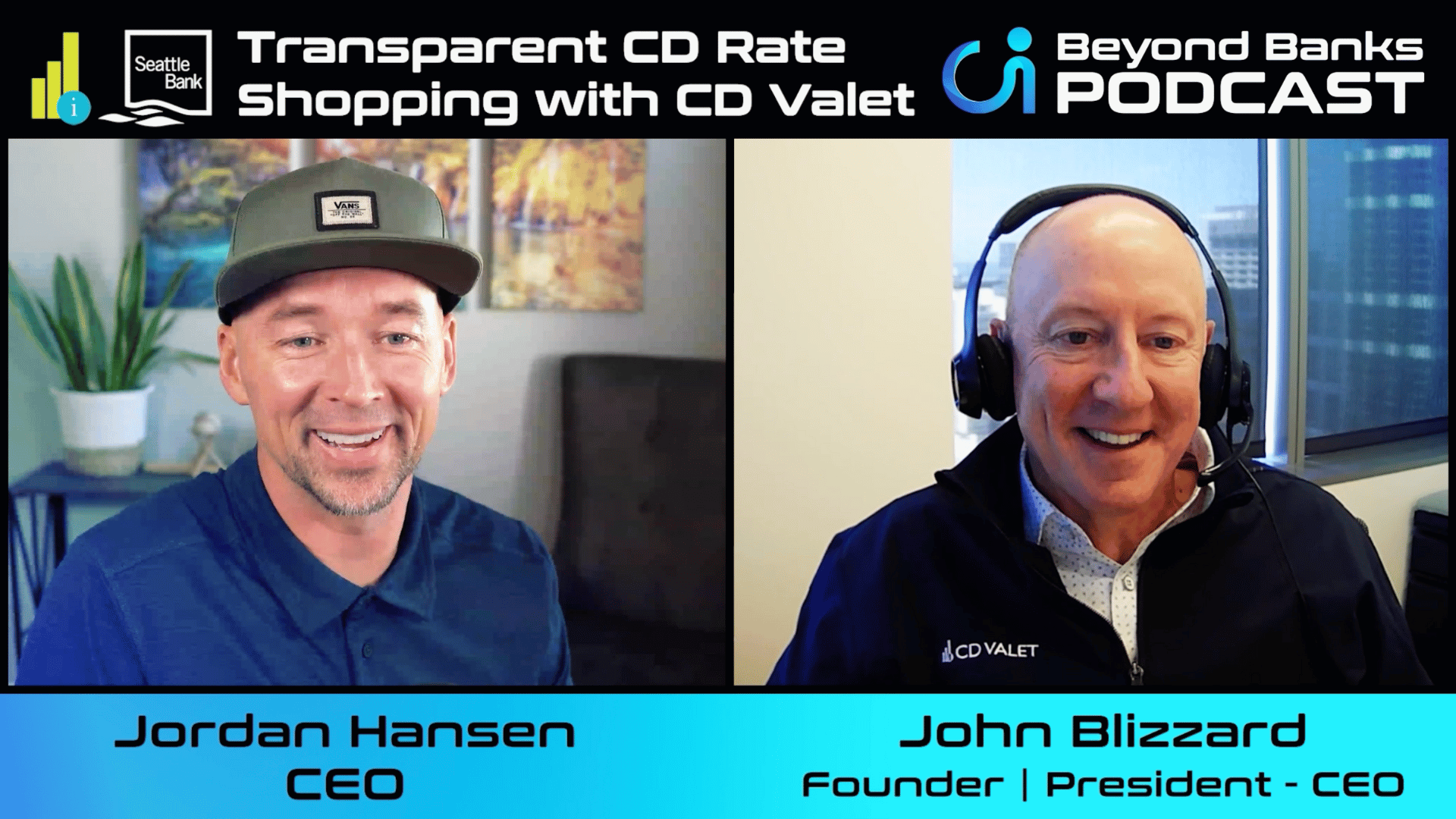




.png)
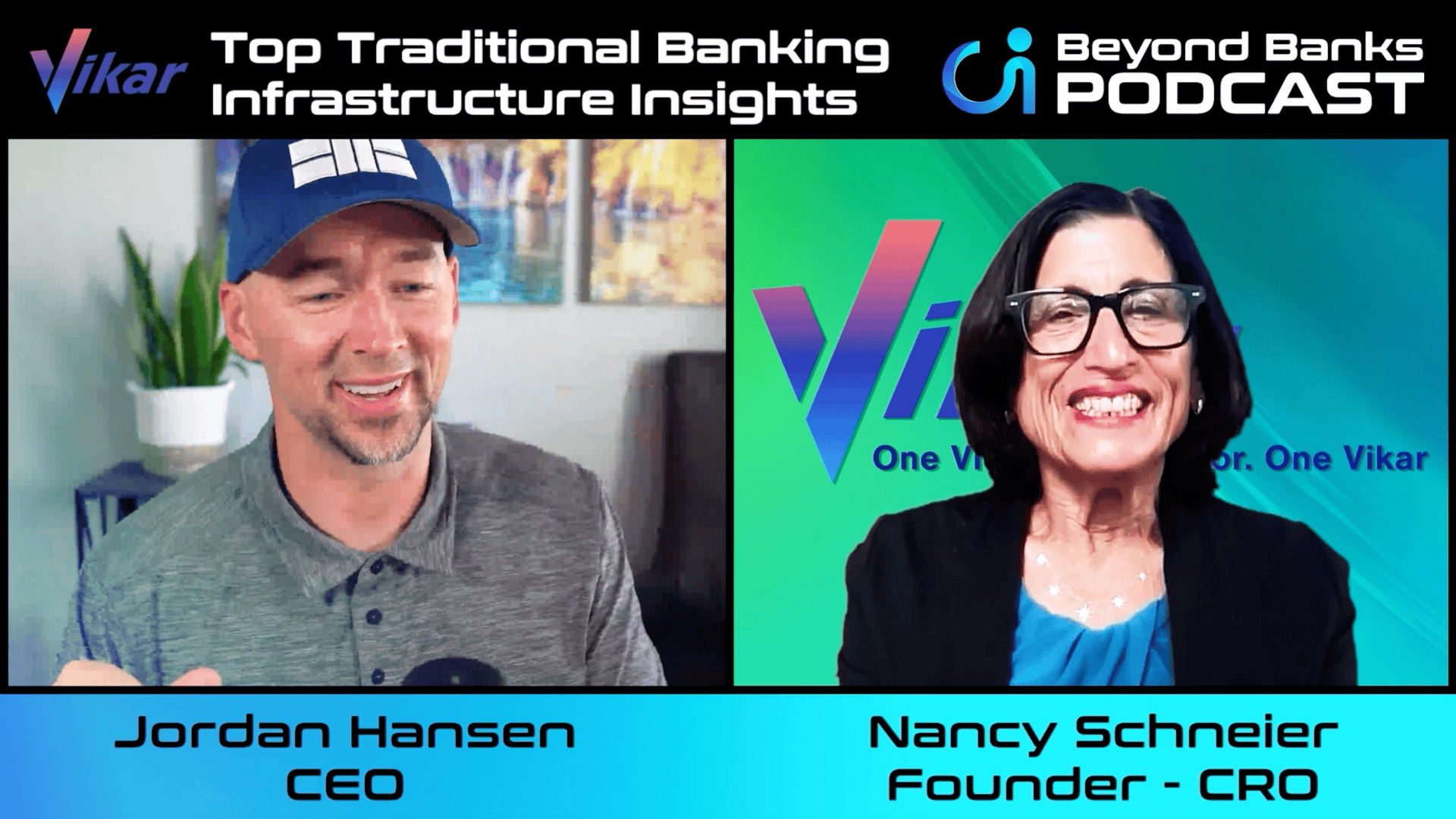
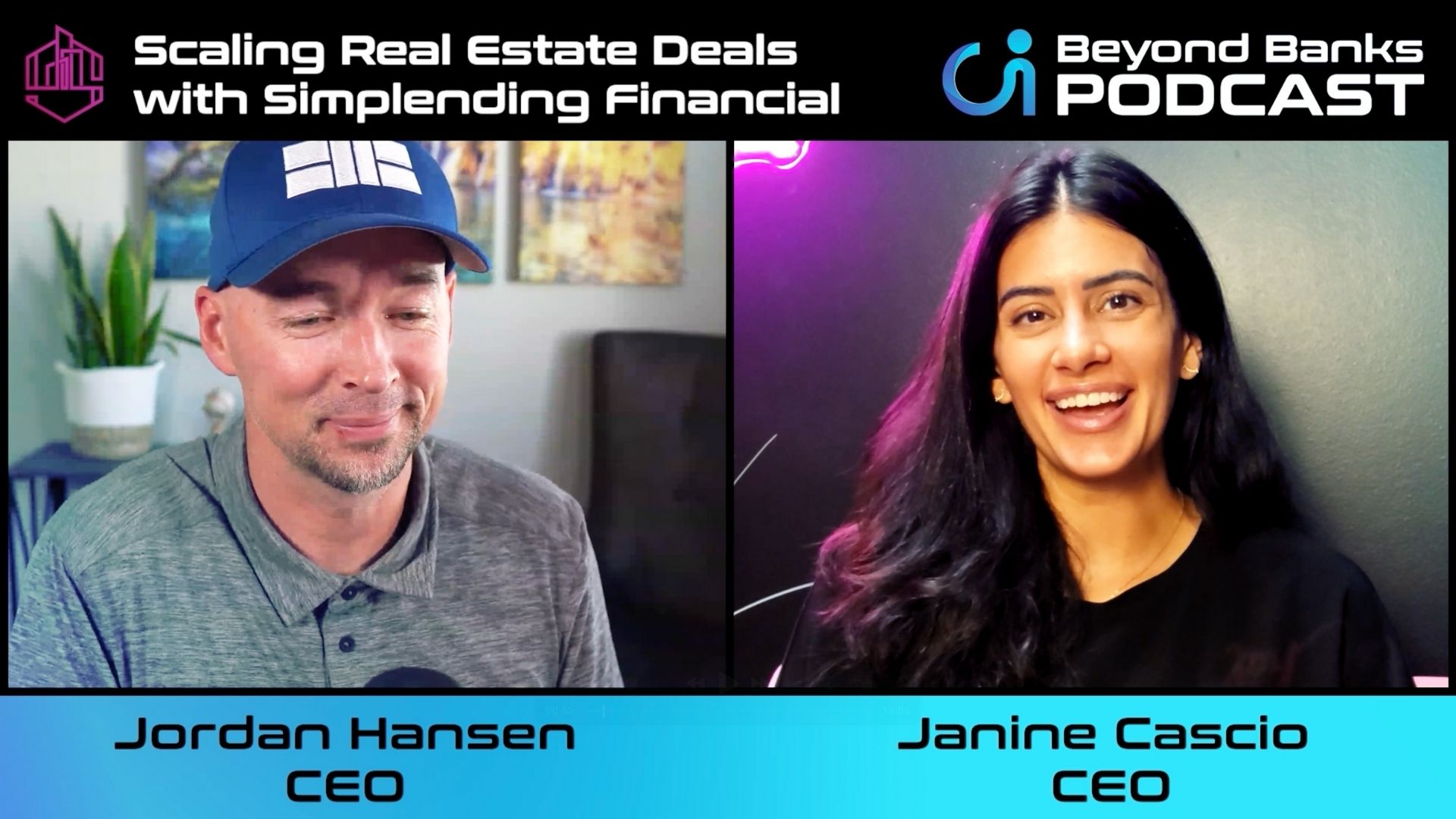
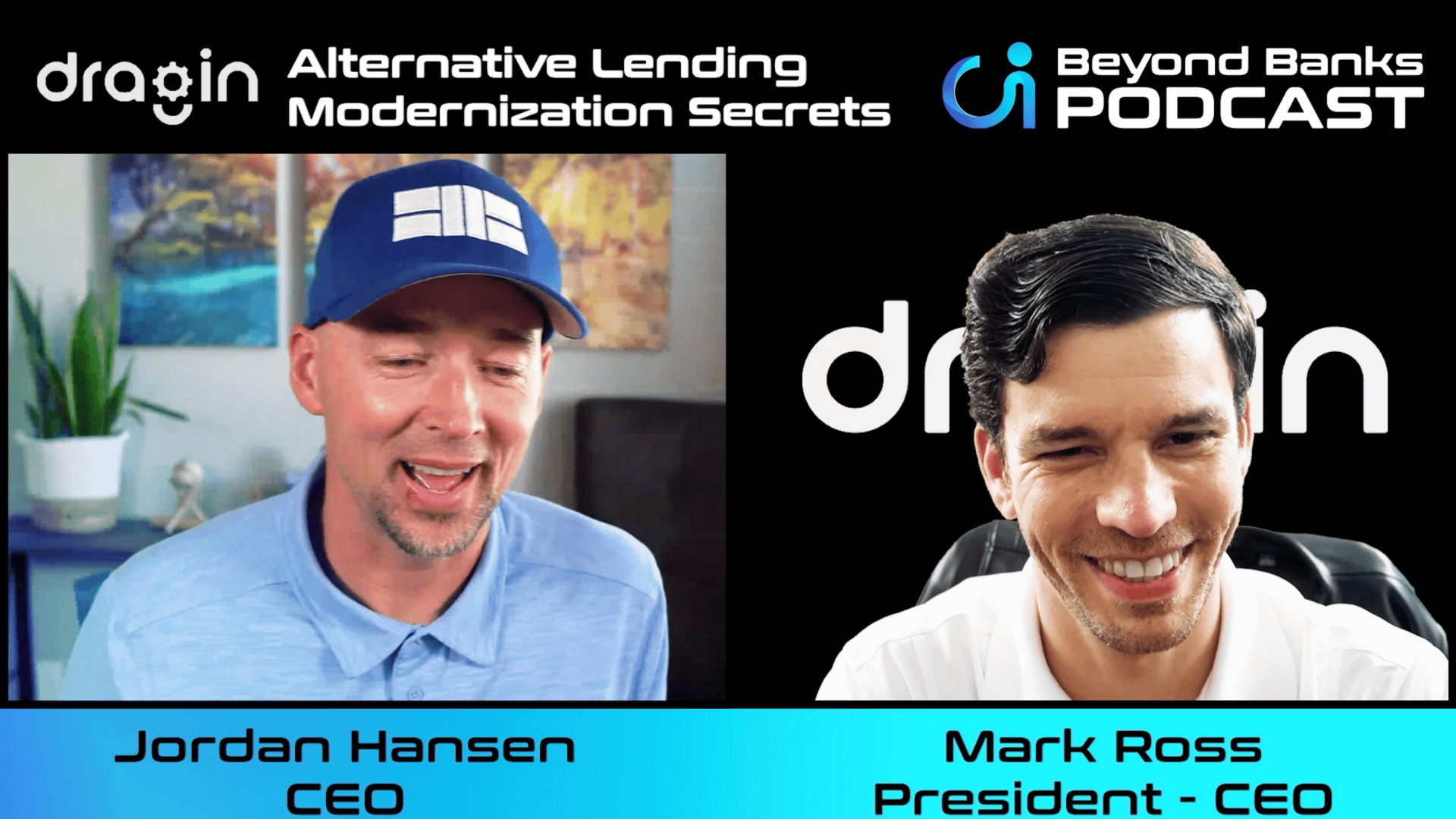

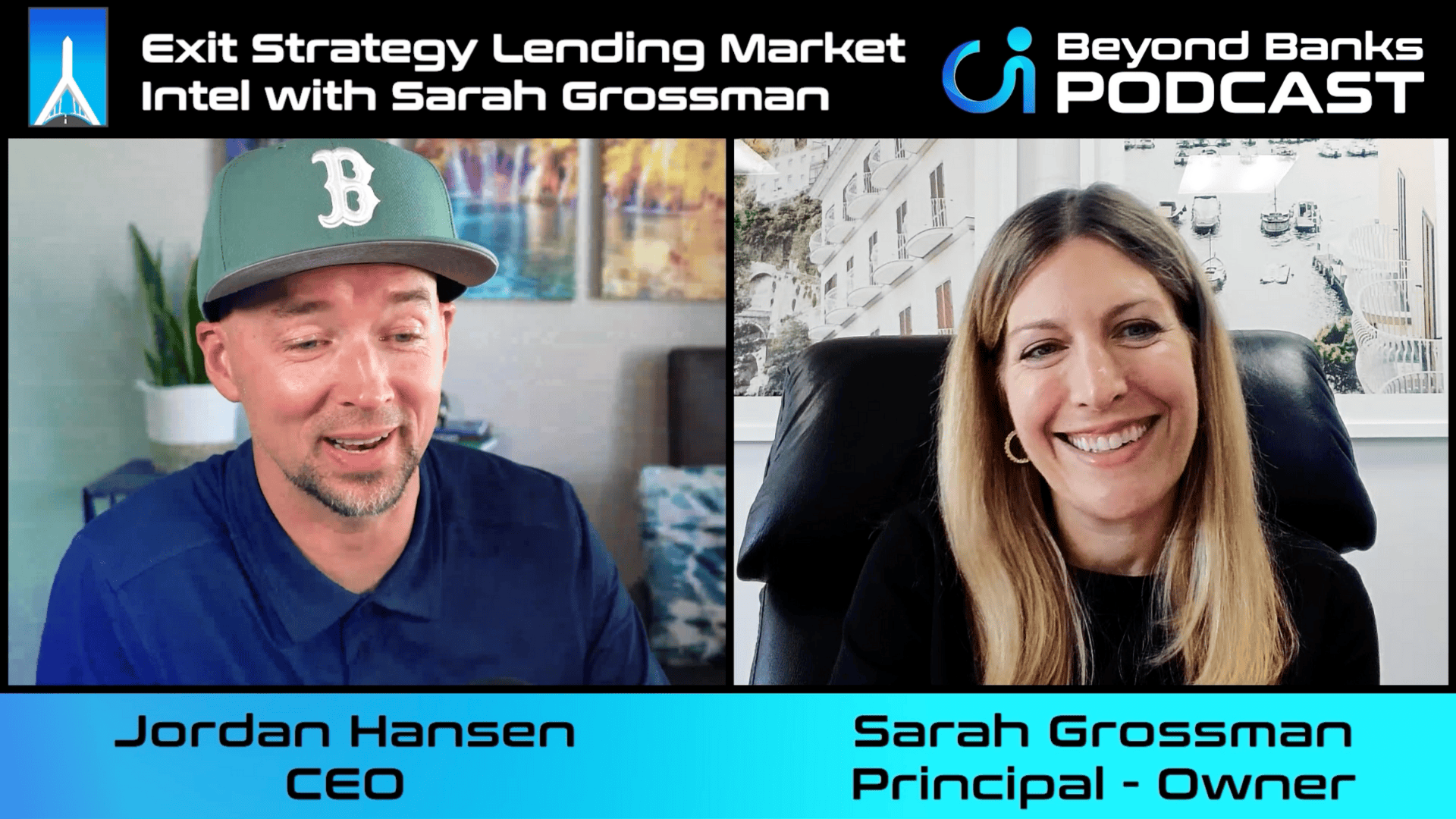
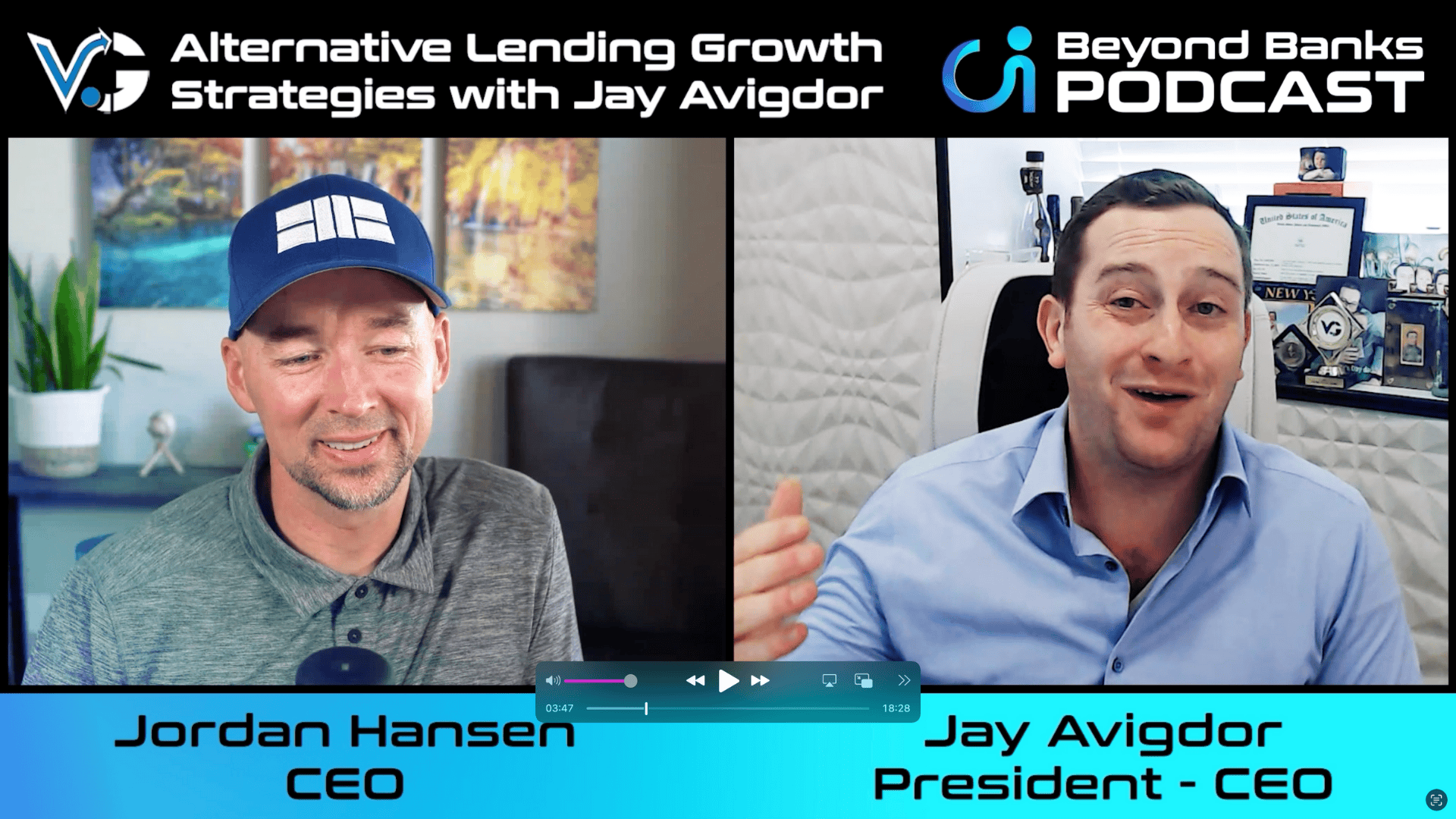
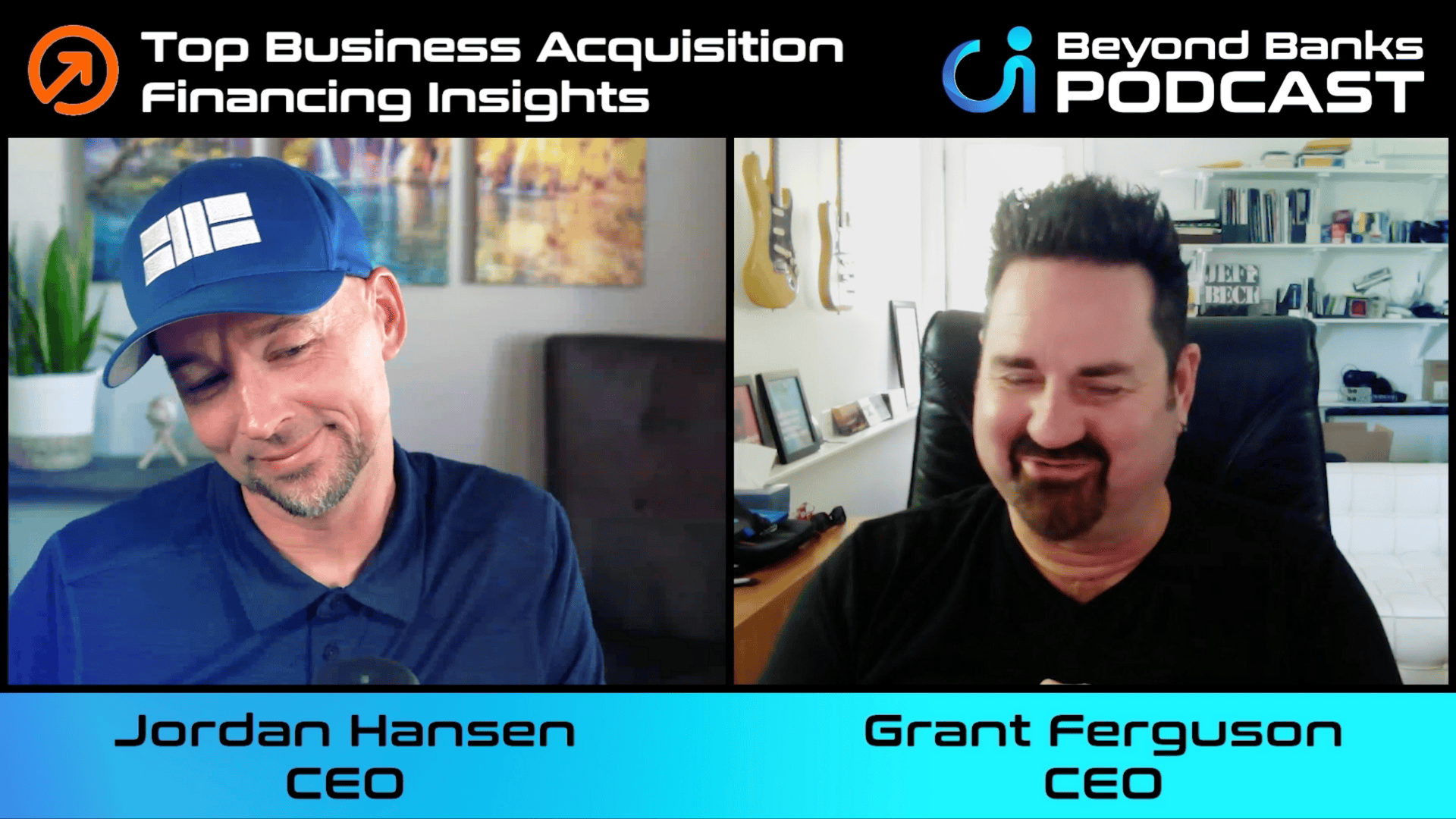


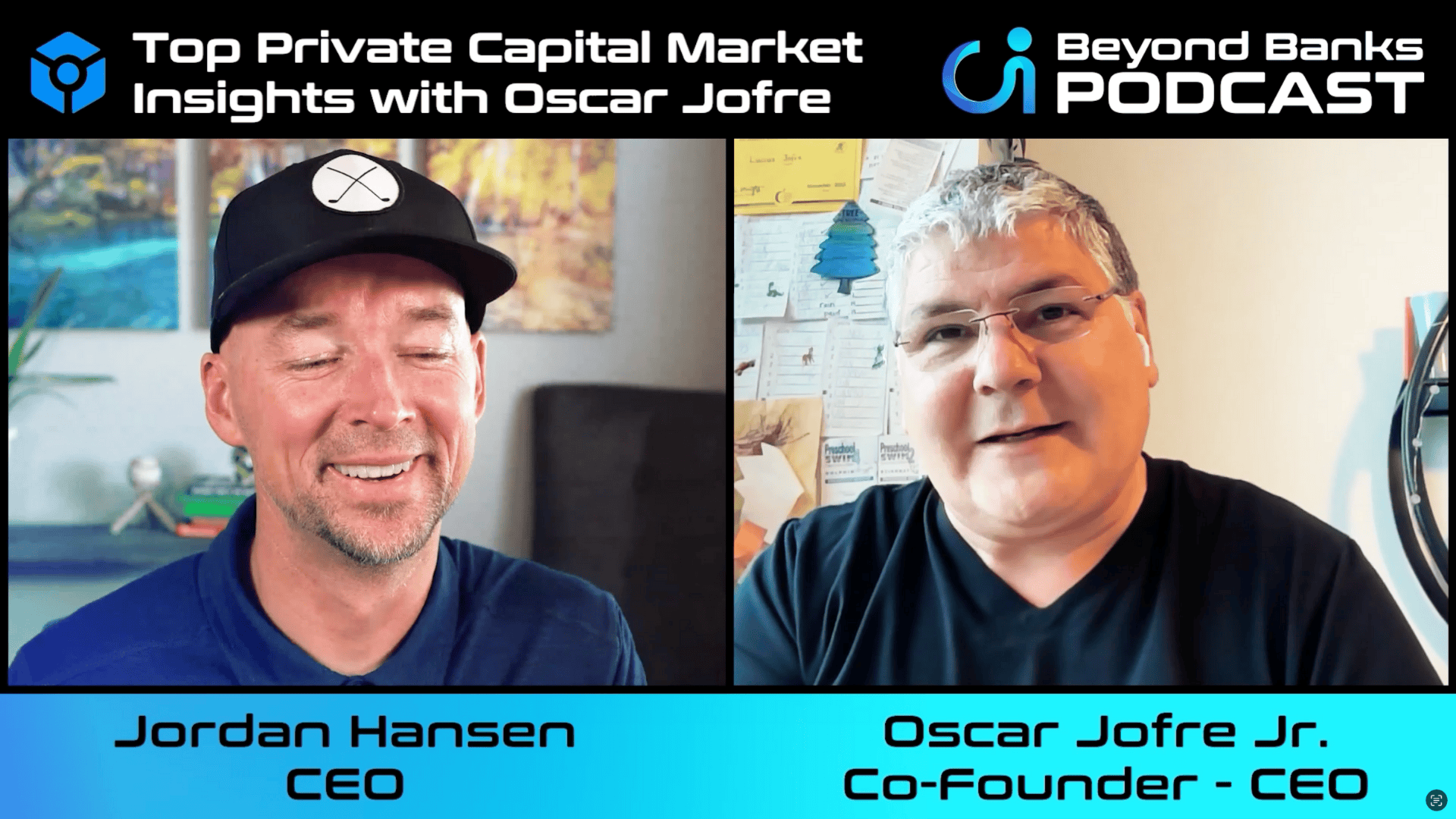

















.png)